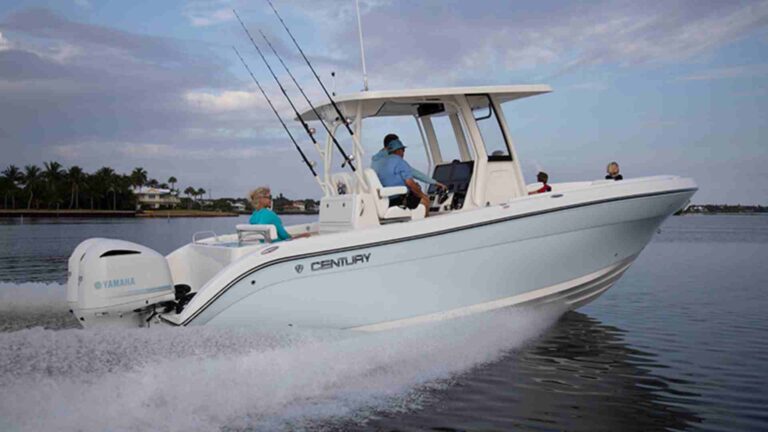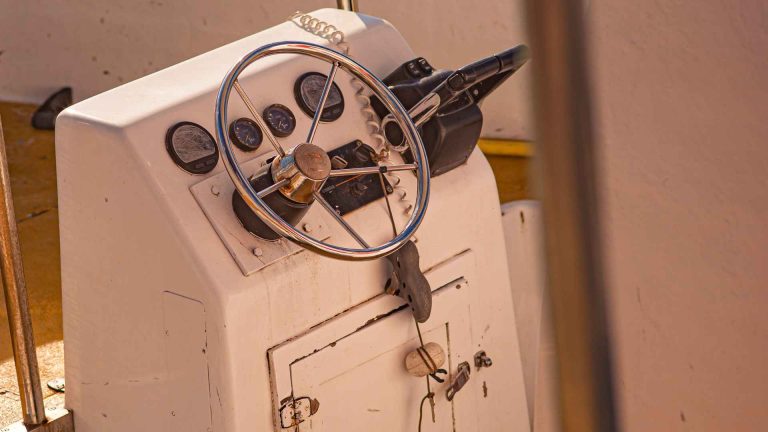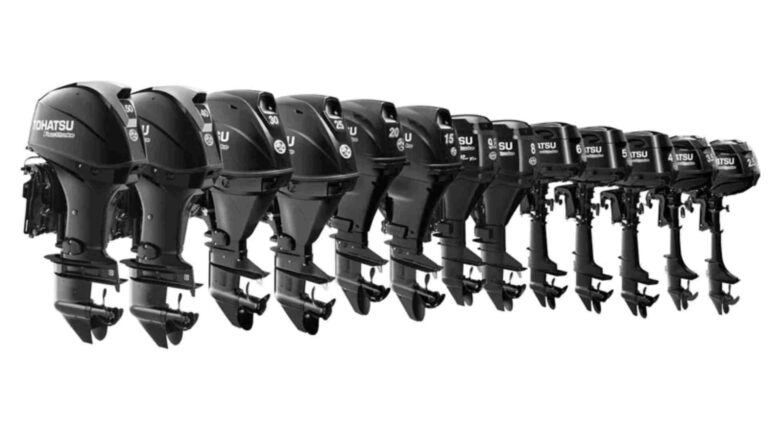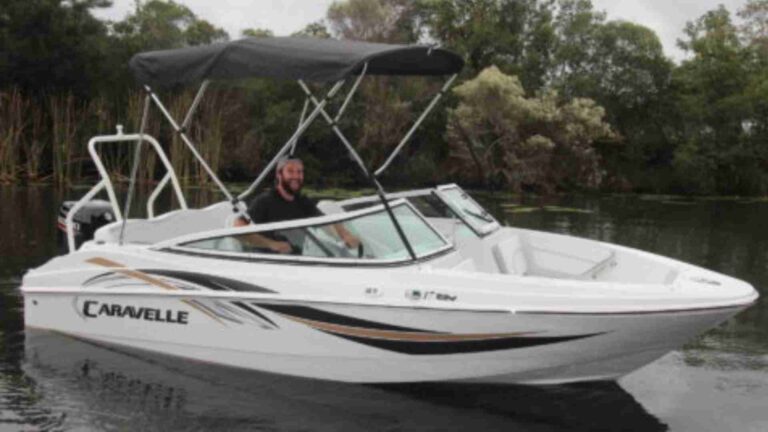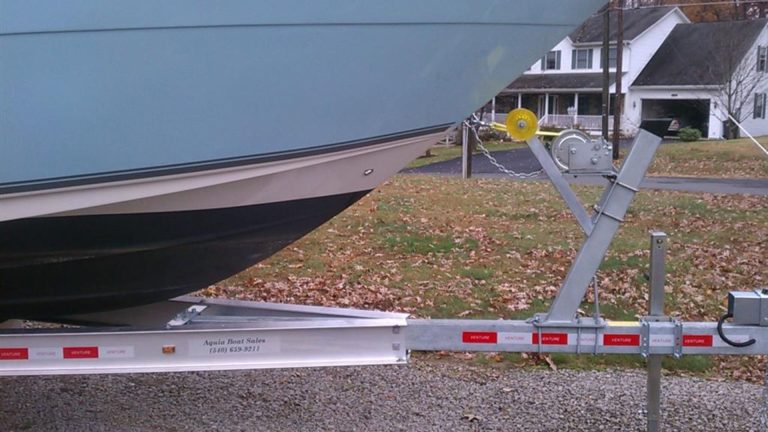How Fast Are Speed Boats: Speed Boating Performance Guide
Speed boats, with their sleek design and powerful engines, evoke a sense of exhilaration and adventure on the water. From racing boats to luxury cruisers, these watercraft come in various shapes and sizes, each engineered for specific performance levels. If you’ve ever wondered just how fast speed boats can go and what factors influence their speed, you’re in for an enlightening ride.
In this comprehensive guide, we will delve into the world of speed boating to uncover the secrets behind their impressive velocities. Whether you’re a speed enthusiast or simply curious about these high-performance vessels, join us as we explore the factors that determine the speed of speed boats and unveil the thrill of chasing the horizon on the open water.
Various Types of Speed Boats Available in the Market

Speed boats encompass a diverse range of watercraft, each crafted with distinct designs and propulsion systems to achieve specific speed goals. Let’s explore the different types of speed boats available in the market:
- Powerboats: Powerboats are the most common type of speed boats and come in various styles, such as bowriders, center consoles, and cuddy cabins. They are propelled by internal combustion engines, typically using gasoline or diesel fuel. Powerboats are versatile and well-suited for recreational activities like waterskiing, wakeboarding, and leisure cruising.
- Jet Boats: Jet boats utilize waterjet propulsion instead of traditional propellers. Water is drawn through an intake and expelled at high speed through a nozzle, propelling the boat forward. This design allows jet boats to operate in shallower waters and provides increased maneuverability, making them popular for river and shallow water use.
- Hydroplanes: Hydroplanes are specialized racing boats designed for high-speed competitions. They have a distinct hull shape, often featuring a stepped design to reduce drag and improve stability. Hydroplanes can achieve astonishing speeds and are commonly used in events like hydroplane racing and drag boat racing.
- High-Performance Boats: High-performance boats are custom-built vessels designed for maximum speed and agility. They often have powerful engines, lightweight construction, and advanced hull designs to minimize drag and enhance performance. These boats are favored by thrill-seekers and racing enthusiasts for their exceptional speed capabilities.
Each type of speed boat is engineered to cater to different water conditions and boating preferences. Whether you seek the thrill of racing, the versatility of recreational activities, or the agility to navigate shallow waters, there’s a speed boat designed to meet your needs and ignite your passion for high-speed adventures on the water.
Key Factors That Influence the Speed of a Boat
The speed of a boat is influenced by a combination of factors that work in unison to determine its maximum velocity. Understanding these key factors can shed light on the thrilling world of high-speed boating:
- Engine Power: The engine’s horsepower and torque play a pivotal role in a boat’s speed. A more powerful engine can generate greater thrust, propelling the boat forward with more force. High-performance boats often boast powerful engines to achieve remarkable speeds.
- Boat Weight: The weight of the boat, including passengers, fuel, and equipment, affects its buoyancy and overall performance. A lighter boat experiences less resistance and can reach higher speeds with greater ease. Manufacturers often use lightweight materials to enhance a speed boat’s performance.
- Hull Design: The shape and design of the boat’s hull greatly impact its speed capabilities. A sleek and aerodynamic hull reduces drag, allowing the boat to glide through the water more efficiently. Hydrodynamic features like stepped hulls and tunnels can further optimize speed and stability.
- Water Conditions: Water conditions, such as wave height, currents, and wind, can significantly influence a boat’s speed. Rough waters and strong currents create resistance, limiting the boat’s velocity. On the other hand, calm waters provide optimal conditions for achieving top speeds.
The interaction between these factors can result in varying boat speeds. For instance, a boat with a powerful engine may achieve impressive speeds in calm waters, but its performance might be hindered in rough conditions due to increased resistance. Similarly, a lightweight boat with an efficient hull design may maintain high speeds across a range of water conditions.
Boat designers and enthusiasts carefully consider these factors to create vessels that excel in specific environments and meet the performance expectations of different boating activities. The perfect combination of engine power, boat weight, hull design, and water conditions can unlock the thrilling potential of speed boats and provide boaters with an unforgettable and heart-pounding experience on the water.
5 High-Performance Boats Designed to Achieve Remarkable Speed Records
High-performance boats are the epitome of engineering excellence, pushing the boundaries of speed and agility on the water. These extraordinary vessels have set numerous speed records, earning their place in the boating hall of fame. Let’s explore some iconic speed boats and their record-breaking achievements:
- Bluebird K7: The Bluebird K7 is an iconic hydroplane boat that achieved legendary status in the boating world. Piloted by Donald Campbell, it set numerous water speed records in the 1950s and 1960s. In 1964, Donald Campbell set the world water speed record of 276.33 mph (444.71 km/h) on Coniston Water in England, making him the fastest man on water at the time.
- Spirit of Australia: Another renowned hydroplane, the Spirit of Australia, held the world water speed record twice during the 1970s. Designed and piloted by Ken Warby, the Spirit of Australia achieved its fastest speed of 318.75 mph (513.28 km/h) in 1978 on Blowering Dam in Australia, securing its place in history.
- Spirit of Qatar: In the world of offshore powerboat racing, the Spirit of Qatar set the Superboat Unlimited world speed record at the 2014 Lake of the Ozarks Shootout in Missouri, USA. This high-performance catamaran reached an astonishing speed of 244.23 mph (393.09 km/h), leaving spectators in awe of its raw power.
- Miss Budweiser: The Miss Budweiser hydroplane was a dominant force in unlimited hydroplane racing for decades. It held multiple speed records in various categories and was renowned for its exceptional speeds and victories in races around the world.
- Alfa Romeo II: A famous offshore powerboat, Alfa Romeo II set a world speed record for the fastest circumnavigation of the globe by a powerboat. It completed the journey in just under 61 days, showcasing the endurance and speed capabilities of these high-performance vessels.
These iconic speed boats, among many others, have left an indelible mark on the world of boating, inspiring generations of enthusiasts and setting the bar for future speed achievements. Whether in hydroplane competitions, offshore powerboat racing, or other speed events, these remarkable vessels have proven that with the right combination of engineering prowess and a daring spirit, there are no limits to how fast a boat can go on water.
Typical Speed Ranges for Recreational Speed Boats
Recreational speed boats come in various shapes and sizes, each designed to offer different experiences on the water. While high-performance boats are known for pushing the speed limits, most recreational speed boats are built to balance speed, comfort, and safety. Here’s a general overview of the typical speed ranges for different types of recreational speed boats:
- Bowriders: Bowriders are popular for their versatility and ability to accommodate a group of passengers. These boats generally have a speed range of around 30 to 50 mph (48 to 80 km/h). They are designed for leisurely cruising and are well-suited for activities such as water skiing, tubing, and day trips.
- Wakeboard Boats: Wakeboard boats are optimized for wakeboarding and other water sports that require a strong wake. They typically have higher horsepower engines, allowing them to reach speeds of 35 to 45 mph (56 to 72 km/h). The focus with these boats is on creating ideal wake conditions rather than achieving maximum speed.
- Sport Cruisers: Sport cruisers are larger vessels designed for comfortable and extended cruising. They offer amenities like cabins, kitchens, and washrooms. These boats can reach speeds of 25 to 40 mph (40 to 64 km/h) and are meant for leisurely exploration of coastlines and islands.
- Center Consoles: Center console boats are popular for fishing and recreational activities. They usually have higher horsepower engines and can achieve speeds of 30 to 50 mph (48 to 80 km/h) or more. These boats provide versatility for fishing, water sports, and cruising.
It’s essential for boat owners to understand the speed capabilities of their vessels and operate them within safe limits. Many factors can influence a boat’s top speed, including engine power, boat design, hull type, load, and water conditions. Exceeding safe speed limits can compromise stability, handling, and fuel efficiency, leading to potential accidents or damage to the boat.
In addition to understanding speed limits, boat operators should always prioritize safety, wear appropriate safety gear, and be familiar with local boating regulations and navigational rules. Whether you’re cruising with family and friends, engaging in water sports, or simply enjoying the serenity of the water, responsible and safe boating practices ensure a memorable and enjoyable experience on your recreational speed boat.
Significance of Safety When Operating Speed Boats

Safety should always be the top priority when operating speed boats. While the thrill of speed boating is undeniable, it comes with increased risks that demand responsible and skilled handling. Here are some key safety considerations to keep in mind:
- Proper Training and Experience: Operating a high-speed boat requires specific skills and knowledge. It’s essential to receive proper training and gain experience in handling speed boats before venturing into faster waters. Enrolling in a boating safety course can provide valuable insights into safe navigation, handling emergencies, and understanding navigational markers.
- Adhering to Speed Limits: Speed limits are in place for a reason – to ensure the safety of all boaters, passengers, and the environment. Respect posted speed limits and be aware of any specific speed regulations in certain areas, such as near docks, marinas, or congested waterways.
- Navigational Rules: Familiarize yourself with the navigational rules for the waterways you’re boating in. Adhering to these rules helps prevent collisions and ensures smooth traffic flow on the water. Give way to other vessels when required and maintain a safe distance from swimmers, divers, and other boats.
- Life Jackets and Safety Gear: Always wear approved life jackets when on a speed boat. In case of an accident or a sudden stop, life jackets can save lives, especially for non-swimmers and young children. Additionally, ensure that safety equipment, such as fire extinguishers, flares, and first aid kits, are onboard and readily accessible.
- Avoid Impairment: Operating a speed boat while under the influence of alcohol or drugs is illegal and extremely dangerous. Impairment affects judgment, coordination, and reaction times, increasing the risk of accidents. Designate a sober operator or wait until everyone can enjoy the water safely.
- Weather and Water Conditions: Be aware of weather forecasts and water conditions before heading out on the water. High winds, choppy waters, or poor visibility can make high-speed boating hazardous. Always use caution and common sense when navigating in adverse conditions.
- Emergency Preparedness: Have a plan in place for emergencies, including communication devices to reach shore or request assistance if needed. Inform someone on land about your boating plans and estimated return time.
By prioritizing safety, maintaining situational awareness, and adhering to best practices, boaters can enjoy the exhilaration of speed boating while minimizing risks and ensuring a safe and enjoyable experience for all on board. Remember that being a responsible and knowledgeable boater contributes to the overall enjoyment of the boating community and helps preserve the natural beauty of our waterways.
Regulation and Enforcement of Speed Limits in Different Waterways and Jurisdictions

Regulation and enforcement of speed limits in different waterways and jurisdictions are vital to maintaining safety, protecting the environment, and ensuring a harmonious boating community. Local authorities, such as the U.S. Coast Guard, state agencies, and municipalities, are responsible for setting and enforcing speed limits on waterways.
Speed limits are typically established based on factors such as the size and type of the water body, surrounding environment, boat traffic density, and potential hazards. Here are some key points related to regulation and enforcement:
- Variable Speed Limits: Speed limits on waterways may vary depending on the location and time of day. In areas with high boat traffic or near sensitive ecosystems, lower speed limits may be imposed to reduce the risk of accidents and minimize environmental impacts.
- No-Wake Zones: No-wake zones are designated areas where boaters must operate their vessels at idle speed, creating minimal wake. These zones are common near marinas, docks, swimming areas, and wildlife habitats to prevent shoreline erosion, protect structures, and maintain a safe environment for swimmers and marine life.
- Environmental Concerns: Speed restrictions may also be implemented in areas with fragile ecosystems, such as seagrass beds, coral reefs, and wildlife habitats. Operating at reduced speeds helps prevent propeller damage to underwater vegetation and minimizes disturbance to marine life.
- Enforcement: Local authorities and law enforcement agencies have the responsibility to enforce speed limits and other boating regulations. Officers may use radar or speed detection devices to monitor boat speeds and issue citations for violations.
- Boater Responsibility: Boaters must take responsibility for adhering to speed limits and other regulations to ensure the safety of everyone on the water. Following posted speed limits and being mindful of no-wake zones demonstrates respect for fellow boaters, swimmers, and the environment.
- Community Education: Local authorities often conduct boating safety education programs to raise awareness of speed limits and other regulations. Boaters are encouraged to stay informed about local waterway rules and participate in safety courses to enhance their knowledge and skills.
Adhering to speed regulations is essential for maintaining a safe and enjoyable boating experience for everyone. By respecting speed limits, boaters can protect the environment, minimize the risk of accidents, and contribute to a positive and harmonious boating community. Always stay informed about local regulations, be considerate of others on the water, and operate at safe speeds to ensure a responsible and enjoyable boating experience.
Watch Fastest speed boats in the world | Video
How fast can speed boats typically go?
The speed of speed boats can vary widely depending on their design, size, and intended use. Recreational speed boats may reach speeds of 30 to 60 miles per hour (48 to 97 kilometers per hour), while high-performance boats and racing boats can achieve speeds of 100 miles per hour (160 kilometers per hour) or more.
What factors affect the speed of a speed boat?
Several factors influence the speed of a speed boat, including engine power, boat weight, hull design, water conditions, and propeller efficiency. The combination of these factors determines the boat’s maximum velocity.
Are speed boats safe at high speeds?
Speed boats can be safe at high speeds when operated responsibly and by experienced boaters. It is essential to follow safety guidelines, wear appropriate safety gear, and have proper training in handling high-speed boats to ensure safe navigation.
What types of boats are considered high-performance boats?
High-performance boats are specially designed to achieve high speeds and are often used for racing or recreational boating. Examples include offshore powerboats, hydroplanes, catamarans, and certain types of jet boats.
Are there speed restrictions on waterways?
Yes, speed restrictions exist in many waterways to ensure the safety of boaters, passengers, and the environment. Local authorities enforce speed limits and may implement no-wake zones near marinas, docks, and sensitive areas to prevent accidents and minimize environmental impact.
Conclusion

In conclusion, this article explored the diverse world of speed boats, highlighting various types such as powerboats, jet boats, hydroplanes, and high-performance boats. We discussed how factors like engine power, boat weight, hull design, and water conditions play pivotal roles in determining a speed boat’s maximum velocity. Furthermore, we learned about high-performance boats and their record-breaking achievements, as well as typical speed ranges for recreational boats.
Throughout the discussion, safety emerged as a crucial theme, emphasizing the need for proper training and experience to handle high-speed boats responsibly. Understanding and adhering to speed limits and navigation rules were also underscored for the safety of all boaters and passengers.
With this knowledge, readers are encouraged to appreciate the thrill of speed boating while prioritizing safety and responsible navigation. By respecting speed limits and embracing proper safety practices, boaters can enjoy exhilarating and memorable experiences on the water, while maintaining harmony within the boating community. With the right approach and understanding, speed boats can offer an exciting and safe way to explore the open waters.
Share How Fast Are Speed Boats: Speed Boating Performance Guide with your friends and Leave a comment below with your thoughts.
Read How Do Shrimp Boats Work: A Comprehensive Guide until we meet in the next article.
